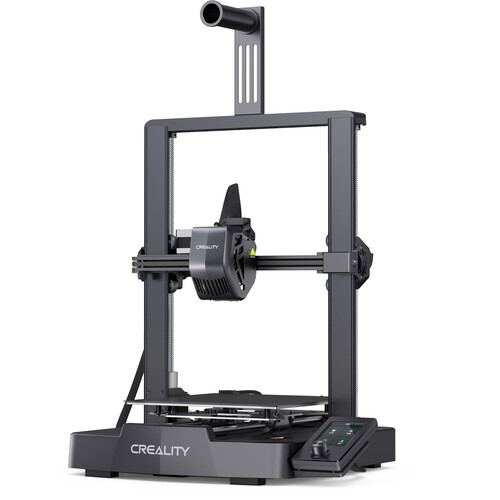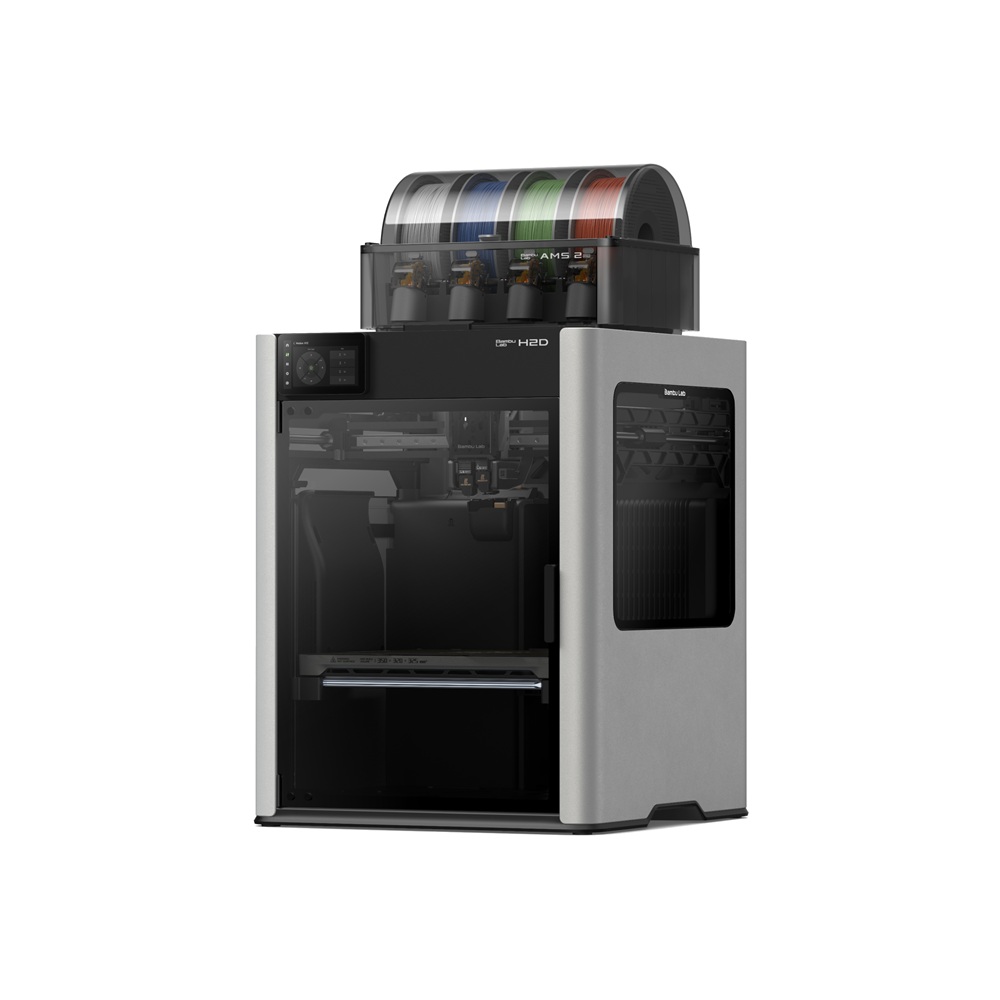Compare Ender 3 V3 SE vs H2D
Comparison between the best 3D printers
Choose the best 3D printer at the best price. The cheapest 3D printers are here.
Buy a 3D printer here with 3D Fila.
 |
 |
|
| Model | Ender 3 V3 SE[BUY Ender 3 V3 SE] |
H2D |
| Printing Material | Filament | Filament |
| Buy Filament for Creality Ender 3 V3 SE | Buy Filament forBambu Lab H2D | |
| Estimated price | $199,00 | $1899,00 |
| Manufacturer | Creality | Bambu Lab |
| Release Year | 2023 | 2025 |
| Print Volume [mm] | 220x220x250 | 350x320x325 |
| Printer Size [mm] | 420x366x490 | 492x514x626 |
| Weight [kg] | 7,34 | 42,3 |
| Power Loss Recovery | NO | YES |
| Enclosed printer | NO | YES |
| Bed Leveling | Automatic | Automatic |
| Filament End Sensor | NO | YES |
| Bed type | Heated | Heated |
| Power supply system | Direct Drive | Direct Drive |
| Standard nozzle | 0,4 | 0,4 |
| Maximum Nozzle Temperature [°C] | 260 | 350 |
| Maximum Bed Temperature [°C] | 100 | 120 |
| Maximum printing speed [mm/s] | 250 | 600 |
| Filament holder | YES | YES |
| Camera for supervision | NO | NO |
| Recommended filaments | PLA, PETG e TPU (95A+) | PLA, PETG, ABS, ASA, TPU, PVA, Nylon (PA) |
| Recommended slicers | Creality Print, Cura 5.0 ou superior, Prusa Slicer, Orca | Bambu Studio |
| Maximum Resolution [mm] | 0,1 | 0,01 |
| Processor | 32-bit Silenciosa | |
| Display | 3,2'' + Knob | Touchscreen 5'' |
| Power Supply | 350 W | |
| Connectivity | SD | Wifi, Bambu bus, Cartão SD |
| Operating systems | Windows, Linux, Macbook | Windows, Mac, Linux |
| Date of registration in the system | 2024-03-06 | 2025-03-31 |
| Release date | 2023 | 2025 |
| Extra features | The Ender 3 V3 SE stands out for its easy assembly, excellent automatic bed leveling, direct extrusion and easy interface, ideal for beginners. Although it uses a coated PC board, it offers robust performance, with print speeds of up to 250mm/s, thanks to a solid construction and linear rods on the Y axis. It lacks Wi-Fi, preferring file transfer via SD card. | Bambu Labs H2D combines high-speed 3D printing with a chamber heated up to 65 °C, dual extrusion with automatic nozzle switching, an AMS for filament drying and exchange, and AI sensors that detect failures. It offers optional laser and digital cutting capabilities, features intelligent calibration through computer vision, vibration control, enhanced fire safety, and real-time camera monitoring. |
| Support for multiple colors and materials (AMS and CFS) | NO | YES |
Notes * |
||
| Cost-benefit | 7 / 10 | 7 / 10 |
| Hardware | 0.7 / 10 | 7.2 / 10 |
| Tela | . | . |
| Print volume | 3 / 10 | 4 / 10 |
| Performance | 2 / 10 | 5 / 10 |
| [BUY Ender 3 V3 SE] |
Conclusion |
| In comparing the Ender 3 V3 SE and the Bambu Lab H2D 3D printers, several key distinctions emerge that are crucial in guiding potential buyers. The Ender 3 V3 SE, positioned as an entry-level option, offers affordability and simplicity, making it an ideal choice for beginners or hobbyists. Its features, such as automatic bed leveling and direct drive, provide user-friendly operation, while its print speed of 250mm/s is commendable for its price range. However, it is limited by a smaller print volume and lacks advanced features such as power loss recovery and filament sensors, which could hinder its capabilities. Conversely, the Bambu Lab H2D represents a high-end choice aimed at more experienced users or professional settings. Its substantial print volume, dual extrusion capability, and advanced features like automatic nozzle switching and intelligent calibration make it a powerhouse for complex projects. The printer's ability to handle a wider variety of materials and provide faster printing speeds further underscores its advanced capabilities. However, this sophistication comes at a significantly higher price point, which may be prohibitive for casual users. Ultimately, the choice between these two models centers around the user's needs. For those seeking an economical and straightforward introduction to 3D printing, the Ender 3 V3 SE is a reliable option. In contrast, the Bambu Lab H2D is ideally suited for users who require top-tier performance and are ready to invest in a more premium experience. |

